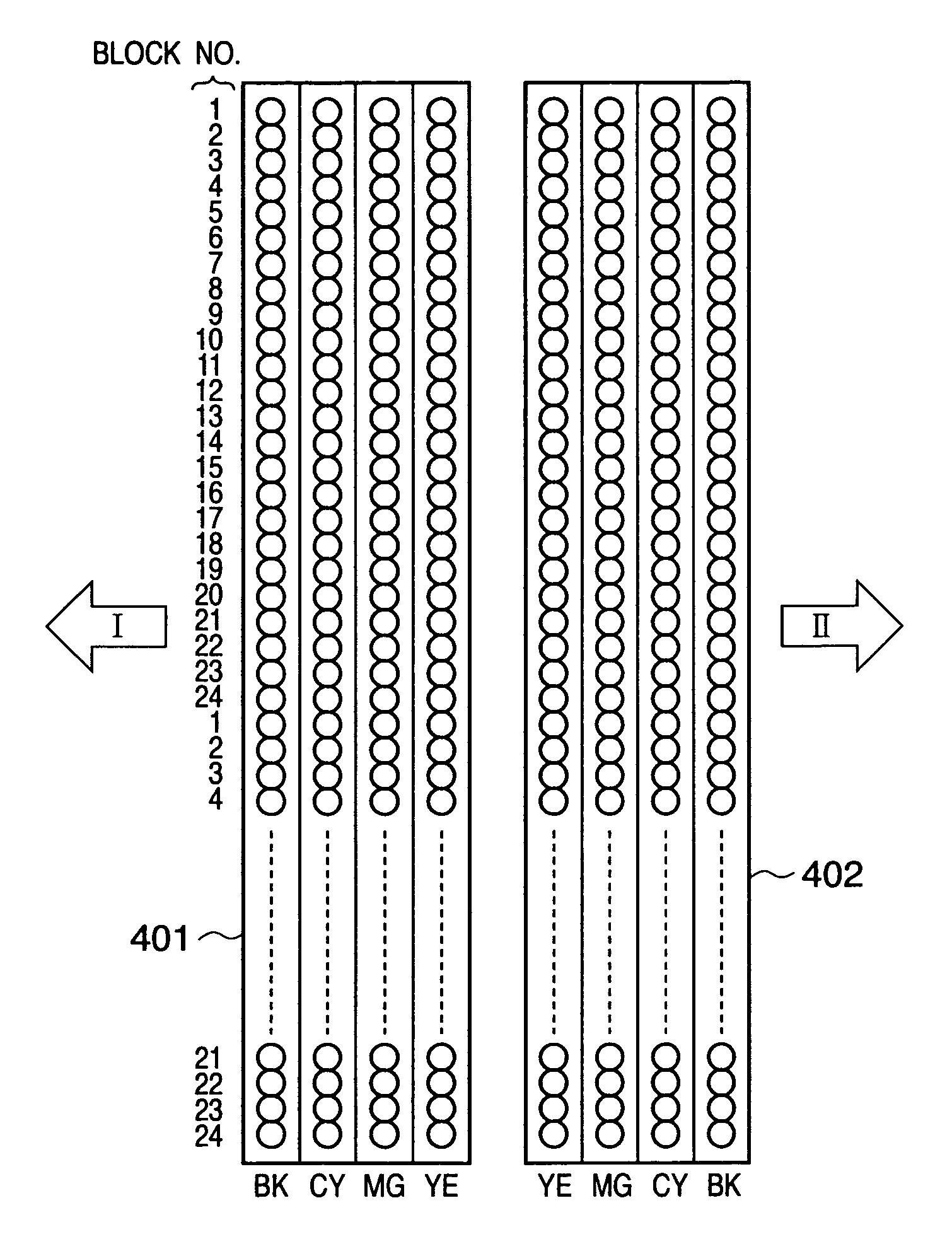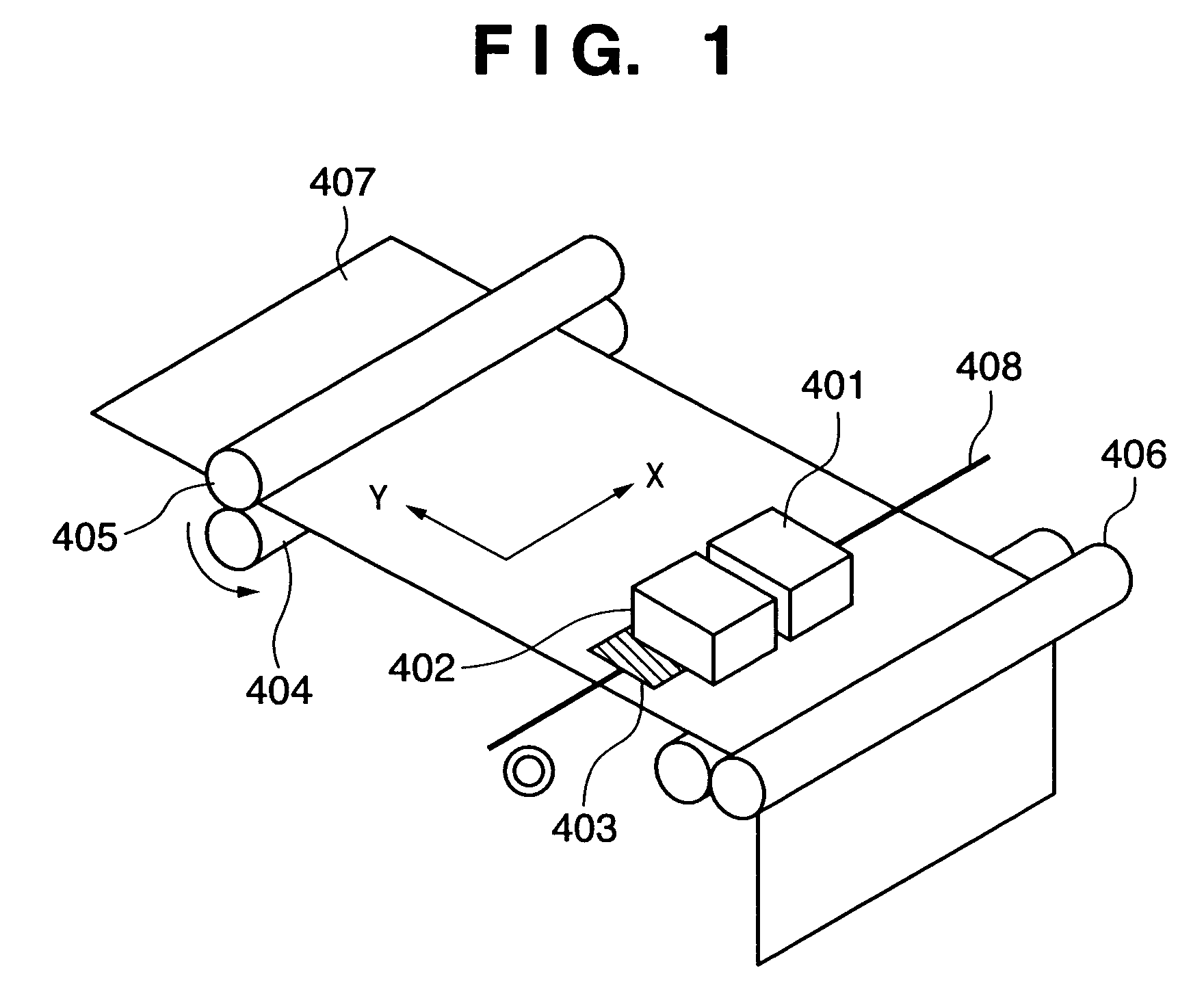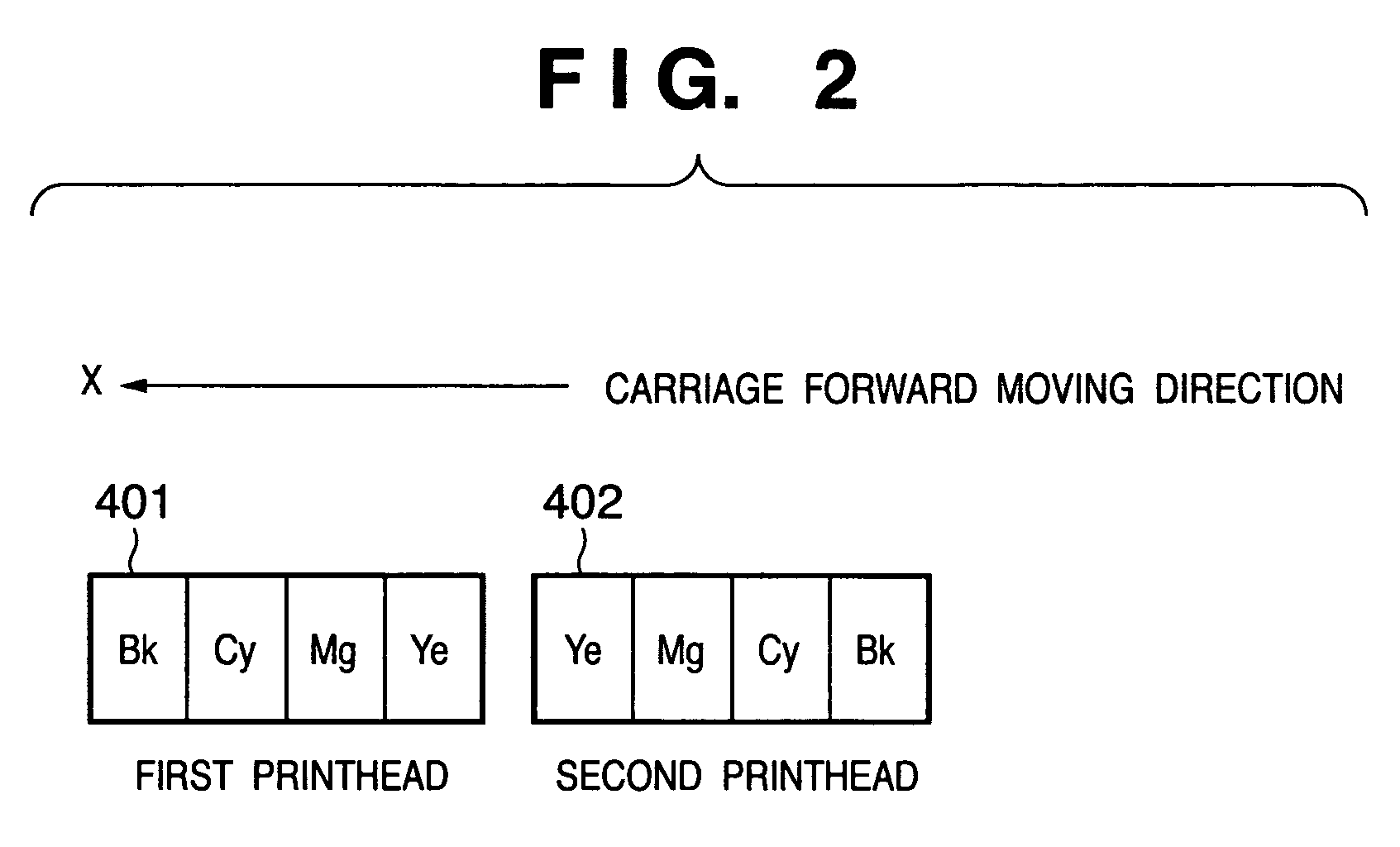Inkjet printing apparatus and inkjet printing method
a technology of inkjet printing and printing apparatus, which is applied in the direction of printing mechanism, spacing mechanism, printing, etc., can solve the problems of deterioration of image quality, uneven density of printed images, and significant deterioration of green areas that are supposed to be uniform, so as to improve printing quality, reduce color mixture and bleeding, and increase cost
- Summary
- Abstract
- Description
- Claims
- Application Information
AI Technical Summary
Benefits of technology
Problems solved by technology
Method used
Image
Examples
first embodiment
[0054]The first embodiment employing the above-described printing apparatus and adopting the present invention is described in detail. The first embodiment is constructed such that printing operation of the first printhead 401 and the second printhead 402 is controlled by thinning processing using mask patterns.
[0055]An inkjet printing apparatus according to the first embodiment not only performs printing by distributing printing dots to the first printhead 401 and the second printhead 402 and executing reciprocal scanning (bi-directional printing), but also employs a multi-pass printing method where an image is formed by scanning one area multiple times. As mentioned above, multi-pass printing is a printing method which forms an image by using plural nozzles in one line, thus reduces density unevenness caused by a slight difference in the ink discharge amount or the ink discharge direction of each nozzle.
[0056]Among multi-pass printing methods, the first embodiment implements a mul...
second embodiment
[0083]Hereinafter, the second embodiment according to the present invention is described. In the following descriptions, with respect to the portions similar to that of the first embodiment, descriptions thereof are omitted, and a characteristic portion of the second embodiment is mainly described.
[0084]In the first embodiment, mask patterns are used for generating pass data which is the driving data of each nozzle. In the second embodiment, nozzles of the respective printing element arrays are divided into plural blocks, then a block to be used in each scan of the reciprocal scans is selected, and nozzles to be driven are selected.
[0085]The printing apparatus according to the second embodiment has a similar construction as that of the first embodiment. However, the number of nozzles which constitute each printing element array is different.
[0086]FIG. 8 is a diagram of the first printhead 401 and the second printhead 402 seen from the discharge surface side. Each of the printing ele...
PUM
 Login to View More
Login to View More Abstract
Description
Claims
Application Information
 Login to View More
Login to View More - R&D
- Intellectual Property
- Life Sciences
- Materials
- Tech Scout
- Unparalleled Data Quality
- Higher Quality Content
- 60% Fewer Hallucinations
Browse by: Latest US Patents, China's latest patents, Technical Efficacy Thesaurus, Application Domain, Technology Topic, Popular Technical Reports.
© 2025 PatSnap. All rights reserved.Legal|Privacy policy|Modern Slavery Act Transparency Statement|Sitemap|About US| Contact US: help@patsnap.com



